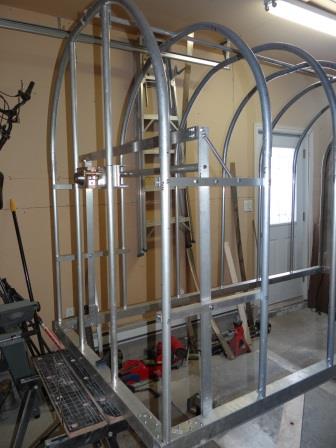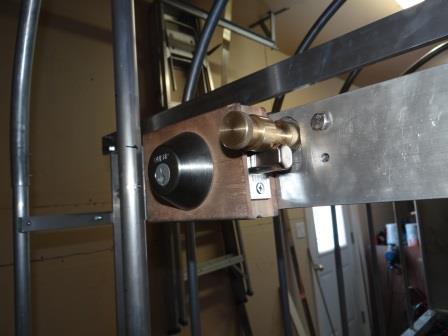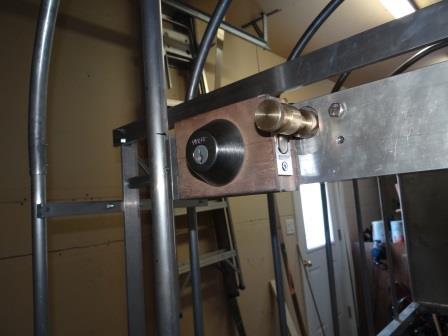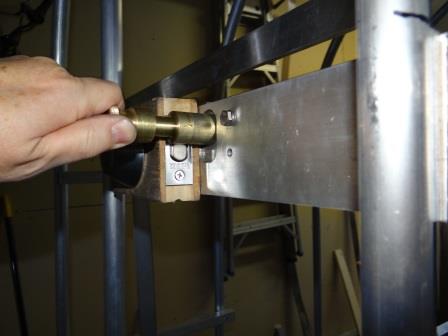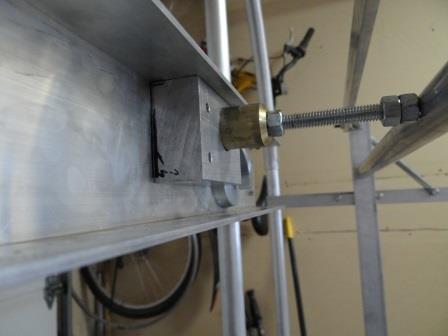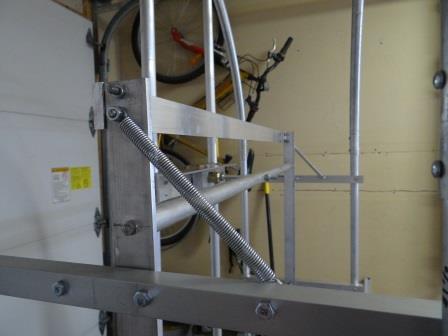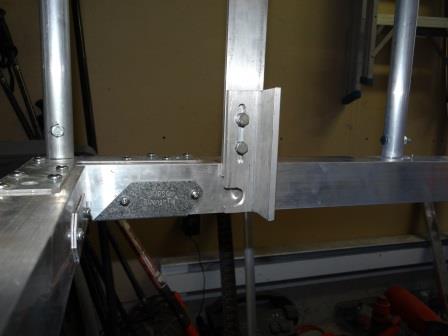Hinged Cover Locking System
My hinged cover is very low profile and discrete and I like it that way! Someone walking by in the street, seeing it in the yard might wonder what it is but will have no idea of it’s contents. The first defense against theft and vandalism is to not bring attention on whatever you are trying to protect. The second line of defence is to make what you are trying to protect more difficult to get to than something else. The potential crook will not want to loose time on something complicated to break in if something else, easier to get to, is at hand. Especially if he does not know if his troubles will net something valuable or not.
For this reason I wanted the locking system for the cover to be streamlined and stealthy, for lack of a better word. I could of attached a padlock between the cement border and the front of the cover. The padlock would have to be at least 24″ above ground to make it accessible after a major snowstorm, frequent during the heart of winter here in Montréal. I felt a better solution, and a bit of a challenge (I like challenges) was to lock it from inside, at the four corners of the cover, using a single key, located high enough to clear most accumulated snow conditions. So I concocted the following locking system:
Two vertical aluminium flat bars, pivoting at their centers, are connected at the top by a 1″ diameter shaft, at the level of a 1″ diameter brass puller which slides in a solid block of aluminium. The brass puller is knurled at the outside end to facilitate gripping with my fingers during unlocking. There is also an aluminium flat plate on top to give the system more rigidity (the round shaft by itself was not able to keep the two side flat bars aligned during the unlocking movement). A dead bolt slides into a machined groove on the brass shaft, locking it. Here is a picture showing the mechanism in a locked position:
And when unlocked, the dead bolt receds in its mechanism and the brass shaft is free to move:
Finaly, to unlock the cover, the short brass shaft is pulled:
Pulling on the knurled brass shaft also pulls a threaded extension rod which is in turn connected to the internal locking/unlocking aluminium structure:
Two springs on each side force the internal locking bracket to return to the locked position:
This picture shows the bottom of one of the locking arms where two adjustable “hooks” are located:
These hooks will engage a bolt attached to a small aluminium angle bracket, fixed on the corner of the floor, to the cement borders on each side when the cover is locked, yet move out of the way when the brass knurled shaft is pulled.
And that is the locking mechanism. At the other end of the cover a simple, static bracket is installed that automatically locks the other two corners when the cover is closed. With the cover closed and locked, it is impossible to open the cover without the key. Even if the hinge pins or the hinge plates are removed, the cover remains solidely locked and will not move. The only way to get to the instrumentation inside without the key is to cut the cover at the base, a very noisy operation. I also installed an internal alarm system so if the cover is tampered with, there is one last barrier to warn of intrusion.
